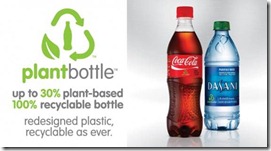 The industry for bioplastics is still in its infancy and growing fast, but there is a lot of confusing terminology in the area of bioplastics these days. We will take some time to look into some of the current accepted terminology from the major bioplastics organizations. First, let’s start off with the fact that not all biobased polymers/plastics are biodegradable. We will clarify the difference between bioplastics and biopolymers a little later in this post. Biobased polymers typically come from renewable sources such as plants, corn, and other biomass starting materials.
The industry for bioplastics is still in its infancy and growing fast, but there is a lot of confusing terminology in the area of bioplastics these days. We will take some time to look into some of the current accepted terminology from the major bioplastics organizations. First, let’s start off with the fact that not all biobased polymers/plastics are biodegradable. We will clarify the difference between bioplastics and biopolymers a little later in this post. Biobased polymers typically come from renewable sources such as plants, corn, and other biomass starting materials.
A good example of a biobased, but not biodegradable plastic is the new plantbottle from the Coca-Cola Company. The polymer used in plastic bottles is polyethylene terephthalate (PET, recycle number 1). PET is produced using condensation polymerization of monoethylene glycol (MEG) and terephthalic acid (TA). The suppliers of the Coco-Cola plant bottle replaced the fossil fuel based MEG with a biobased feedstock. They continue to use fossil fuel based terephthalic acid, so when the biobased carbon content is measured it is in the range of 28%. The plant bottle is a “drop-in” to the current PET recycle streams and has been demonstrated to have the same properties as 100% fossil fuel based PET. A good start. Several companies are working in partnership with Coke to develop a biobased terephthalic acid that would enable a fully biobased PET polymer.
Let’s look at some industry definitions. According to the SPI Bioplastics Council: (Plastics Industry Trade Association Glossary)
Bioplastics : plastic that is biodegradable, has biobased content, or both.
Biodegradable Plastic : a plastic that undergoes biodegradation (a process in which the degradation results from the action of naturally-occurring micro-organisms such as bacteria, fungi, and algae) as per accepted industry standards. As of 2008, accepted industry standard specifications are: ASTM D6400, ASTM D6868, ASTM D7081 or EN 13432.
Biobased content : Fraction of the carbon content which is new carbon content made up of biological materials or agricultural resources versus fossil carbon content. Biobased content is measured following the procedures set by ASTM D6866.
Now let’s look at the definitions for bioplastics and biopolymers (according to SPI Bioplastics Council)
Plastic (ASTM D883) : a material that contains as an essential ingredient one or more organic polymeric substances of large molecular weight, is solid in its finished state, and, at some stage in its manufacture or processing into finished articles, can be shaped by flow.
Polymer (ASTM D883) : a substance consisting of molecules characterized by the repetition (neglecting ends, branch junctions and other minor irregularities) of one or more types of monomeric units.
Another definition is from European Bioplastics (www.european-bioplastics.org)
“The term bioplastics encompasses a whole family of materials which are biobased, biodegradable, or both.”
In the next several posts we will dig a little deeper in the emerging field of bioplastics.

Leave a Reply